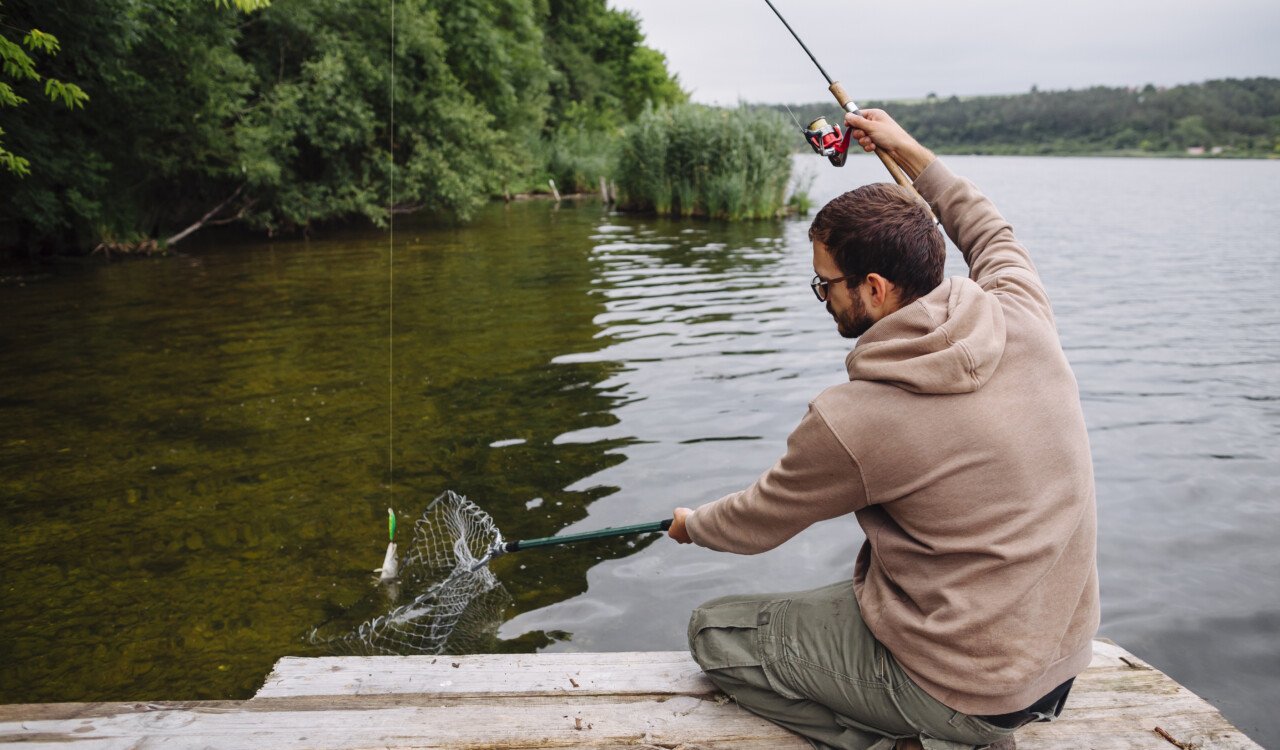Protecting an Ancient Giant: Why It Matters
The Columbia River is home to one of the most iconic freshwater fish in North America, the sturgeon. With a lineage dating back over 200 million years, these prehistoric fish are not just a catch; they’re a living legacy. Catch-and-release sturgeon fishing has become a favorite among conservation-minded anglers, but it’s vital to do it the right way. Proper techniques ensure the fish survive and thrive long after release.
Whether you’re an experienced sturgeon angler or trying it for the first time, this guide walks you through the latest best practices and 2025 regulations to help you fish responsibly and ethically.
Know the 2025 Fishing Rules Before You Go
Before you hit the water, take time to understand the rules in place to protect sturgeon populations:
- Barbless Hooks Only: Use a single-point, barbless hook when targeting sturgeon. It makes removal easier and reduces injury to the fish.
- Catch-and-Release Zones: In most parts of the Columbia River, sturgeon fishing is catch-and-release only.
- Night Closure Rules: Many zones restrict fishing at night, so be sure to check the schedule for your location.
- No Lifting Oversized Fish: If the sturgeon is over 54 inches (fork length), it must remain in the water at all times.
- Valid License Required: A current fishing license and, in some cases, a sturgeon tag are required, even if you’re not keeping the fish.
Staying updated with both Oregon and Washington Department of Fish and Wildlife regulations is crucial. Rules vary by location and can change throughout the year.
Gearing Up for Responsible Sturgeon Fishing
Having the right equipment isn’t just about landing the fish—it’s about doing it safely.
Rod and Line Strength
Use a heavy-duty rod matched with a strong reel and 50 to 80 lb test braided line. This helps you land the fish faster, reducing exhaustion and the risk of post-release death.
Hooks and Terminal Gear
Stick to barbless hooks sized between 5/0 and 9/0. Barbless options make unhooking easier and safer for the fish.
Landing Net and Tools
Use a large, deep rubber net with knotless mesh. It cradles the fish and minimizes damage to skin and fins. Also, bring along long-nose pliers and non-slip gloves to help with hook removal and handling.
Using the Right Bait and Hooking Techniques
Sturgeon rely on smell, so using the right bait makes all the difference. Ideal choices include:
- Sand shrimp
- Smelt
- Herring
- Squid
Secure the bait properly to avoid losing it mid-cast. When the sturgeon takes the bait, you’ll often feel light taps followed by a steady pull. Don’t rush. Allow the fish to take the bait fully before lifting your rod with a firm, controlled motion.
If you’re trying to catch a sturgeon for the first time, remember patience and timing are everything. These fish often feed subtly, and rushing to set the hook too early can lead to missed opportunities or injuries to the fish.
Fight Smart: Landing the Fish Quickly and Gently
Once hooked, a sturgeon will put up a powerful fight. Your goal is not to win a tug-of-war—it’s to bring the fish in swiftly to reduce physical stress. Maintain steady pressure and avoid letting the fish run too long. The sooner you land it, the better chance it has of swimming away unharmed.
Safe Handling: Keep the Fish Wet and Supported
Proper handling starts with keeping the fish in the water whenever possible. For fish over the legal lifting size, you’re not allowed to remove them from the water for any reason—not even photos.
If the fish is within size limits and you’re lifting it briefly:
- Use two hands, one under the belly, the other around the tail.
- Keep the fish horizontal and never hang it vertically.
- Minimize air exposure. Keep photo sessions under 15 seconds.
- Return it to the water immediately after.
Removing the Hook with Minimal Damage
Removing the hook should be quick, gentle, and efficient:
- Use pliers to carefully back the hook out in the direction it entered.
- If the hook is deep or entangled, cut the line close to the mouth instead of risking further harm. Most hooks will eventually rust away naturally.
Releasing the Fish Properly
The way you release a sturgeon matters as much as the way you caught it.
- Hold the fish upright in the water, facing upstream.
- Let water flow through its gills to help it recover.
- Wait until the fish begins to move on its own before letting go.
- Do not toss, throw, or force it back into the river.
Be patient. Some fish need a few moments to regain strength.
Respect the River, Respect the Wildlife
As you fish, remember you’re sharing the Columbia River with other anglers and wildlife. Be a responsible steward:
- Dispose of bait packaging, fishing lines, and trash properly.
- Keep noise and disruption to a minimum.
- Avoid damaging riverbanks and spawning areas.
If you catch a tagged sturgeon, record the tag number and release location. Submit this information to the appropriate state wildlife department to support ongoing conservation research.
Quick Checklist Before You Cast
- Barbless, single-point hook rigged
- Heavy braided line with proper rod and reel
- Rubber landing net on board
- Pliers and gloves ready for safe handling
- Current fishing license and zone rules checked
- Phone or camera set for fast photos, no long delays
Final Thoughts: Fish With Purpose
Sturgeon fishing on the Columbia River is more than just a recreational activity, it’s a connection to one of the planet’s oldest fish species. Practicing ethical catch-and-release techniques ensures that these giants continue to glide through the river’s depths for generations to come.
By being prepared, using proper gear, following the rules, and handling with care, every angler can make a difference. And the reward? A fulfilling, unforgettable encounter with a living fossil.
